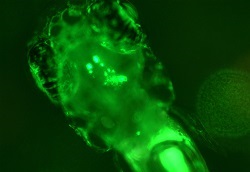Am I too hot or too cold? Knowing your own body
The human body has the ability to constantly monitor its own temperature, which is vital for its normal functioning. To do this, it combines different signals, such as visual signals and touch, and internal signals such as the heartbeat. “We need to understand how we integrate the signals coming from outside our body with other signals from inside our body,” says Laura Crucianelli, research fellow at the Department of Neuroscience, Karolinska Institute(opens in new window), Sweden. “No one had broken down the different signals, internal and external. My project, Homeothermic Self(opens in new window), was the first to do that, by focusing specifically on the skin.” “When all these signals work in concert, we can say ‘yes, this must be my body’ and act accordingly,” Crucianelli explains. “This is based on what we already know from before about ourselves. Otherwise, we begin to doubt our own experiences.”
Behavioural and neurological investigations
The project, undertaken with the support of the Marie Skłodowska-Curie Actions(opens in new window) under the guidance of Henrik Ehrsson(opens in new window), professor of cognitive neuroscience at Karolinska, combined behavioural and neuroimaging methods to shed new light on the body’s perception of temperature and other experiences. “My project pushed the boundaries, because I focus on the perception of temperature via the skin which is the interface between what is inside the body and what is outside.” The work showed we are able to successfully integrate signals generated from outside the body, such as seeing an object touching our body, and internal signals about how an object ‘feels’ on our skin, Crucianelli says.
The ‘fake hand’ illusion
To understand how the brain links these perceptions to one’s own body, Crucianelli used functional magnetic resonance imaging (fMRI) and a prosthetic rubber hand to devise an illusion. She asked experiment participants whether the rubber hand felt like their own hand when it was visible, while their own real hand was hidden from view. Neural responses were measured using imaging. “I created a mismatch between what participants were feeling on their own skin such as feeling a cold temperature and what they were seeing with their eyes – seeing something warm touching the rubber hand,” she adds. “This allows us to understand how we come to recognise the body is our own and how to detect changes in our skin.” “In preliminary analysis, we found neural activation in brain areas involved in the way we recognise our body as our own,” Crucianelli explains. “These areas are also activated when participants have to resolve [sensory] mismatches. So the integration of internal and external signals is particularly important in the way we store our constant image of ourselves.”
Clinical conditions and climate change
Recognising our bodies as our own is important for conditions such as anorexia nervosa, characterised by a lack of body awareness or body image distortions. “We know that people with anorexia nervosa have difficulty in integrating different sensory signals,” she notes. Another area this research could be useful for is when neurological patients lose awareness of their own body after a stroke. Understanding how this works can help patients regain body ownership and facilitate rehabilitation. But more broadly, a society having to adapt to climate change, and its potential consequences for human physical and psychological well-being, will require an understanding of how the body identifies temperature changes.







